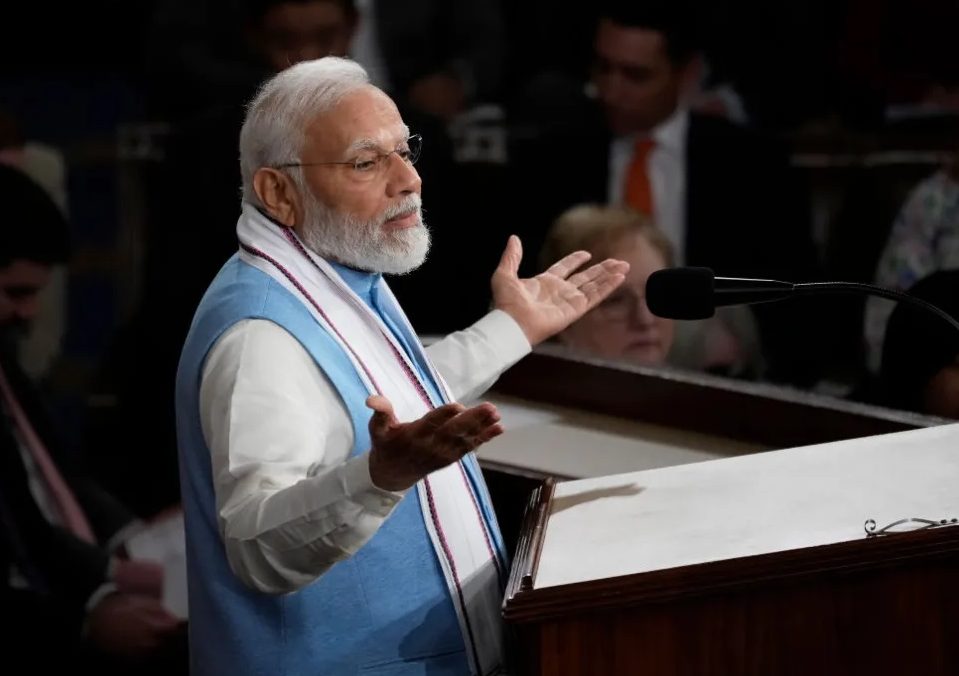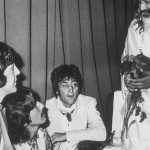Voting in India’s national elections started last Friday. It will take six weeks to complete, which is less of a surprise when one considers that in a population of 1.4 billion people there are 969 million voters, 2,600 political parties, twenty-eight states and 780 languages. It is a logistical task of dazzling scale, not only for India’s election commission but also for its political leaders.
Why then, in January, did Indian prime minister Narendra Modi kick off his re-election campaign to secure his record third five-year term of office in the remote northern city of Ayodhya? This city, in a district with only a few million inhabitants, is a pinprick in the state of Uttar Pradesh (UP), an area with a population of around 250 million people. (If UP were a country, it would rank as the fifth largest by population).
Ayodhya’s importance is twofold. Firstly, it is the birthplace of Lord Ram, the eponymous hero of the 24,000 verse Ramayana, which constitutes one of Hinduisms most important texts. On 22 January, Modi, wearing tradition golden robes, unveiled the black stone idol to Lord Ram which stands in the center of the newly-built temple. Secondly, the temple of Ram was built on the ruins of the centuries old Babri Mosque named after the first Mughal emperor, Babur.
Modi, India’s nationalist leader, is in no doubt
It was burnt down by rampaging Hindu nationalists in 1992, and the result was communal violence throughout India. Some 2,000 people, mainly Muslims, died in the riots, including 900 people in Bombay. I arrived to live in the city some two months after the end of the riots, but nevertheless became quickly aware of continuing racial tensions. Modi’s consecration of the Ram temple was in a sense the culmination of the Ajodhya story. For Modi, the temple presents itself as part of his nationalist narrative of India’s triumph over foreign rule by the Moguls — and indeed by Great Britain.
In 1992, communal riots were particularly bad in Modi’s home state of Gujerat. At the time, Modi was a member the volunteer organization known the RSS (Rashtriya Swayamevak Sangh). RSS’s leaders, pracharaks, such as Modi, are required to be celibate, hence Modi’s famed sexual abstinence.
Although Modi, who started his working life as a station platform chai wallah, had an arranged marriage forced on him by his parents at the age of eighteen, he left his wife almost immediately. Supposedly the marriage was never consummated. In search of spiritual adventure, he traveled around northern India visiting ashrams (Hindu monasteries) before scaling the ranks of first the RSS and then the BJP, becoming chief minister in 2001.
The RSS is a Hindu spiritual and paramilitary organization which operates throughout India. It has between five and six million members. Millions attend its 59,000 shakhas, daily branch meetings. Its political influence within the ruling BJP (Bharatiya Janata Party: Indian People’s Party) is such that apart from Modi, its members include twenty-four state leaders.
Hindu nationalism is thus central to Modi’s identity as a politician. His is in effect a quasi-religious leader as well as India’s prime minister. Inevitably, in a country where 80 percent of the population are practicing Hindus, compared to 14 percent who are Muslim, Modi plays to his strengths.
But it would be a mistake to think that Modi’s electoral success is solely reliant on religion. He is a brilliant electoral operator. A known technophile, he cultivates his ascetic image through television, his website and extensive use of Elon Musk’s social media platform, X. Above all, Modi has developed his cult status through his monthly Mann ki Baat (Talking from the Heart) radio shows in which he delivers homilies about cooking, water conservation, schoolwork etc. With a regular audience of 230 million people, the show is a phenomenon. At the same time, he can deliver brilliant one-liners, and cutting ad hominen attacks on his political opponents.
Electoral skills aside, Modi as a politician is a real-world operator of substance. He became the BJP leader through his astute management of Gujerat’s economy, which he made into one of India’s most successful states. India has been a bigger task. He has given emphasis to the upgrading of India’s previously decrepit infrastructure, including its highways, railways, water distribution, power supply and its banking system.
As a result, India has become investable and is an increasingly attractive alternative to China. Foreign direct investment into India rose from $36 billion when Modi came to office in 2014, to $76 billion in 2023. No wonder countries are beating a path to India. Some countries, such as Switzerland, have already secured free trade deals.
Ultimately the electoral success of Modi and the BJP has been established by economic competence. It is in this arena that the Congress Party, after more than half a century of political dominance, failed. On the BBC World’s Hardtalk in 2005, interviewer Stephen Sackur disapprovingly asked why India had abandoned socialism, Congress Party finance minister P. Chidambaram bluntly replied: “socialist means do not deliver. We tried that for thirty years.”
Indeed, after the collapse of India’s main trading partner, the Soviet Union, in 1991, the economic ideologies of the formerly socialist Congress Party and the BJP were barely distinguishable. At that time, I used to meet young Congress government technocrats in Delhi, such as Jairam Ramesh (later a minister for the environment), who were as enthusiastic about structural economic reform as the young Turks I knew who surrounded Margaret Thatcher when she came to power.
Internecine factional struggles within the Congress Party were finally capped by blatant corruption.
However, by 2009, Congress had lost its mojo — without a belief in socialism, what was Congress’s point? Furthermore, the institutional corruption of bureaucratic government remained intact. The electoral credit won by Nehru for achieving independence had been dissipated by an increasingly diminished dynastic line from Indira Gandhi, Rajiv Gandhi and now Rahul Gandhi, who is a pale shadow of his forbears. Internecine factional struggles within Congress were finally capped by blatant corruption. Gandhi, a poor orator, is seen as an internationalist rich kid born with the proverbial silver spoon. Tepid statements such as “India is the country of love, not hatred” are unlikely to sway the electorate his way.
Unlike Modi, Rahul Gandhi has failed to craft a credible narrative for Congress. And his complaints about the prime minister’s supposedly anti-Muslim “hate speech” rhetoric this week ring hollow. Rahul’s grandmother, Indira, was not averse to using the Hindu card, particularly against the Sikhs, to promote her political ambitions. Moreover, under Modi, communal violence has largely been notable for its absence. According to opinion polls, a not insignificant proportion Muslims support the BJP. Overall, polls predict a landslide victory for Modi.
Modi, India’s most consequential leader since its founding father, Nehru, may not be to the taste of the progressive international media, but his achievements thus far have been globally significant. An economically powerful India is an increasingly important counterweight to China. By comparison, Nehru and his daughter Indira were pro-Soviet socialist blowhards who completely failed to make their country fit for the twentieth century, let alone the twenty-first century.
After ten years in power, Modi has laid the groundwork for the transformation of India into a great world power. Whether he completes the job remains to be seen. But Modi, India’s nationalist leader, is in no doubt. As he recently declared: “The work of these ten years… this is a trailer, I have a long way to go.” A fourth term in office, starting in 2029, may not be beyond him.
This article was originally published on The Spectator’s UK website.


















